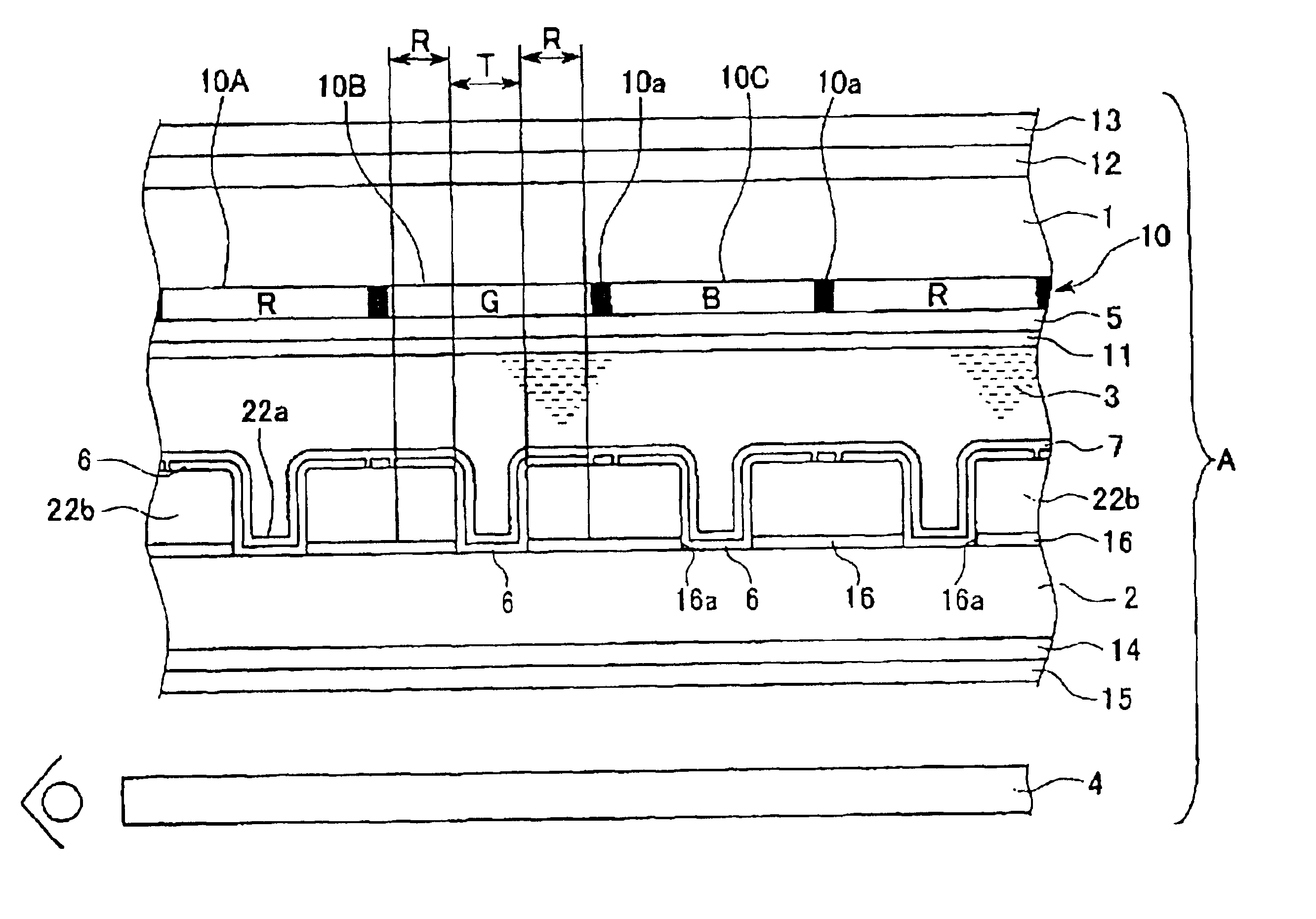Liquid crystal display device and electronic apparatus
a technology of electronic equipment and liquid crystal display device, which is applied in the direction of mirrors, instruments, telephone set constructions, etc., can solve the problems of difficult to obtain high-contrast images and bright images, difficult to view images in dark places, and high cost in tim
- Summary
- Abstract
- Description
- Claims
- Application Information
AI Technical Summary
Benefits of technology
Problems solved by technology
Method used
Image
Examples
first embodiment
[0020]FIG. 1 is a schematic fragmentary sectional view of a liquid crystal display device according to the present invention.
[0021]FIG. 2 is an fragmentary enlarged plan view of a reflection layer of the liquid crystal display device shown in FIG. 1.
[0022]FIG. 3 is a schematic illustration of a transmissive scattering layer of the liquid crystal display device shown in FIG. 1.
second embodiment
[0023]FIG. 4 is a schematic fragmentary sectional view of a liquid crystal display device according to the present invention.
third embodiment
[0024]FIG. 5 is a schematic fragmentary sectional view of a liquid crystal display device according to the present invention.
PUM
| Property | Measurement | Unit |
|---|---|---|
| particle size | aaaaa | aaaaa |
| particle size | aaaaa | aaaaa |
| surface roughness | aaaaa | aaaaa |
Abstract
Description
Claims
Application Information
 Login to View More
Login to View More - R&D
- Intellectual Property
- Life Sciences
- Materials
- Tech Scout
- Unparalleled Data Quality
- Higher Quality Content
- 60% Fewer Hallucinations
Browse by: Latest US Patents, China's latest patents, Technical Efficacy Thesaurus, Application Domain, Technology Topic, Popular Technical Reports.
© 2025 PatSnap. All rights reserved.Legal|Privacy policy|Modern Slavery Act Transparency Statement|Sitemap|About US| Contact US: help@patsnap.com



